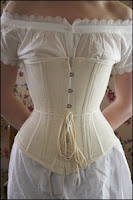Getting Exercise in a Downpour:
Shopping with Tootsie, the holy terrier!
Not wanting to cancel our walk on a story day, Frances, Tootsie (the Jack Russell terrorist) and I decided to evaluate our options.
Every summer, you hear of dogs (and children) left in hot cars. Why can't people figure this out? The web lists many stores that are dog friendly, including some surprising ones. Unfortunately, many of the list are not nearby--Pottery Barn, Macy's, Gap, Bloomingdale's, Old Navy, Nordstrom's--to name a few. The website points out that local store managers do not always follow the corporate line.
 |
| People! Come pet me & feed me! |
A recent news story told of a Florida sheriff breaking into a car in a Home Depot parking lot to rescue a dog. The rescuers took the dog into the garden center to hose it down. I am not sure where they took the owner! Ironically, Home Depot is a store that allows dogs. On one rainy day, Frances, Tootsie and I walked every aisle in our local Home Depot and logged 1.5 miles. You could get 3 miles if you repeated the route.
Lowe's has a few more aisles in the garden center so you can get slightly more that 1.5 miles walking every aisle. Tootsie prefers doing two stores rather than repeating rows. She pulls to the exit whenever we walk close to it. She also smells everything as we walk, but finds hardware store merchandise boring!
We try to maintain discipline and do not look too closely at all the interesting things while walking for distance. A few aisles in Lowe's and Home Depot are so boring that we have trouble remembering whether or not we walked them. Tootsie insists we stop if anyone seems interested in her. She tries to charm everyone into petting her because I give each person who stops a yummy to feed Tootsie--a great way to train a dog to like everyone! We often circle back to check out some must-have items and often end up buying something!
So on a recent rainy day, the three of us walked Home Depot, Lowe's and Petsmart. Pet stores, of course, welcome our furry friends. We walked almost every aisle of Petsmart and reached just a quarter mile.
Lowe's has a few more aisles in the garden center so you can get slightly more that 1.5 miles walking every aisle. Tootsie prefers doing two stores rather than repeating rows. She pulls to the exit whenever we walk close to it. She also smells everything as we walk, but finds hardware store merchandise boring!
We try to maintain discipline and do not look too closely at all the interesting things while walking for distance. A few aisles in Lowe's and Home Depot are so boring that we have trouble remembering whether or not we walked them. Tootsie insists we stop if anyone seems interested in her. She tries to charm everyone into petting her because I give each person who stops a yummy to feed Tootsie--a great way to train a dog to like everyone! We often circle back to check out some must-have items and often end up buying something!
 |
| Now, this is a place to shop! |
If you are not sure how your dog will behave in a store, a pet store is the place to start. Petsmart has "doggy oops" stations with clean-up supplies. Until Tootsie outgrew her submissive wetting whenever anyone petted her, Petsmart was her only shopping location. Several times when she was a puppy, the store dog trainer would stop to check her out and I received some excellent puppy-rearing advice!
 |
| I love getting a treat at checkout! |
 |
| I know this is just a photo-op, but I like riding in the cart! |
An elderly dog might not enjoy walking on concrete floors, but would enjoy riding in the cart while you exercise. Remember to bring a towel to make the ride more comfortable.
If you are as afflicted as I am, walking without your dog is no fun. Store walking is great for rainy days. The added benefit is that the terrorist finally tires out!




























